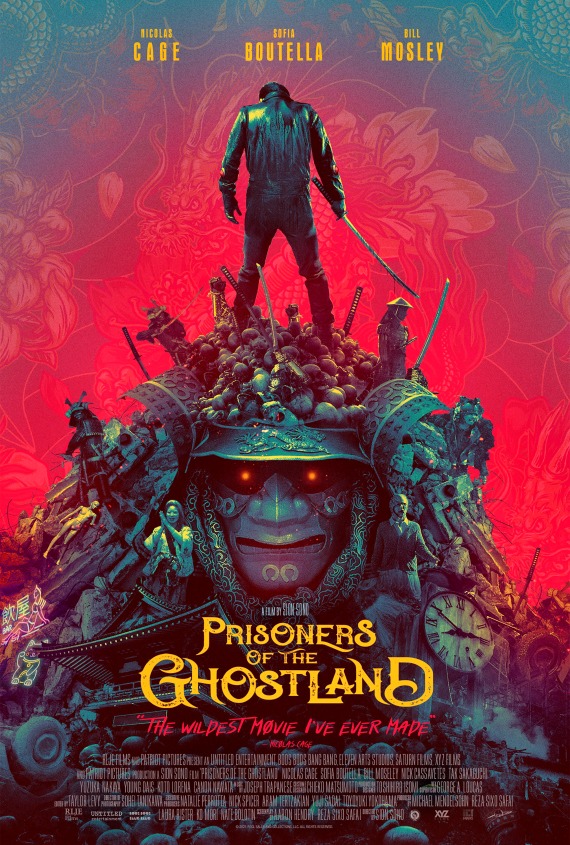Part 1 can be found here

Last week I wrote about book covers which eschew painted art in favor of photographs. This is a trend that has pretty much taken over the publishing industry as far as mainstream literature goes and it is even beginning to become standard in the area of science fiction and fantasy covers.
 One of the main reasons for this has had to do with the development of computer generated imagery, or CGI. Now, it is true that there is still artistry involved in the creation of CGI imagery. I’m not trying to start an argument by suggesting that there isn’t. However, the skill set that is required to create realistic looking CGI is different from that which is required to make a believable image by spreading paint on a canvas.
One of the main reasons for this has had to do with the development of computer generated imagery, or CGI. Now, it is true that there is still artistry involved in the creation of CGI imagery. I’m not trying to start an argument by suggesting that there isn’t. However, the skill set that is required to create realistic looking CGI is different from that which is required to make a believable image by spreading paint on a canvas.
That was one of the reasons that I spent last week introducing three artists who have successfully bridged the divide between classically produced art and images created with the help of a computer. The three artists I mentioned, Scott Grimando, Chris McGrath and Dave Seeley certainly aren’t alone in their use of computer programs such as Photoshop to create fantastic art. I wanted to highlight those three artists in particularly because each of them has had extensive training in classical art techniques. Each of those three have learned how and still do produce art with traditional materials and mediums without the aid of a computer.
 However, the industry is changing. There are still large publishing houses who employ art directors to facilitate the matching of cover art to the books that the company publishes and these art directors are conversant in the languages of art and design and have (or should have) more than a passing familiarity with the history of art and recognize the necessary skills that are required to produce the art that the books require.
However, the industry is changing. There are still large publishing houses who employ art directors to facilitate the matching of cover art to the books that the company publishes and these art directors are conversant in the languages of art and design and have (or should have) more than a passing familiarity with the history of art and recognize the necessary skills that are required to produce the art that the books require.
But there is a growing number of books that do not get published by a major publishing house, or even any publishing house at all. Self published authors books’ need covers just the same as the legacy publisher’s books do. Self published authors, however, don’t have an art director on staff who can go out and get it for them. In many cases the author is left with having to pay someone to do that or try to do it themselves.
But what is an appropriate cover image for your book? Do you go to a stock photo site and find an image or two that work? Sometimes you do. Sometimes it works. Sometimes it doesn’t. Sometimes you can find a great image that goes perfectly well with your story. Unfortunately, a stock image is not exclusive. There could easily be another author who feels that the perfect image that you chose for your book is just as perfect for theirs. And then there may be still another author who feels the same way.
 There is a growing market for designers to peddle their services to self published authors. An author in need of a cover can decide what their budget will allow and then decide accordingly. Sometimes the results can be surprisingly good. Sometimes… not so much.
There is a growing market for designers to peddle their services to self published authors. An author in need of a cover can decide what their budget will allow and then decide accordingly. Sometimes the results can be surprisingly good. Sometimes… not so much.
Unfortunately the business of book covers tends to lead to a lot of cliches. The cover is an important tool for telling a potential reader what kind of reading experience he or she is going to have when they buy and read your book. If you feel your book will appeal to fans of another book, then it makes sense to try to emulate the look of that book’s cover, right?
That logic is argued, somewhat convincingly, by a lot of book cover designers like this one. For every Tom Kidd who is trying to produce something new and memorable for each book cover he designs for Random House there are dozens of designers who will create you a cover that looks almost-but-not-quite-like the cover of a current bestseller to try to help your book find that exact market.
True, there is still painted art on book covers and much of it is fantastic art in its own right. There are still artists who work hard to try to get across the book’s essence with only one image (and hopefully make it marketable at the same time). I’m one of them.
But there are fewer artists whose work graces the covers of books and that number is dwindling by the day.
So, where is the fantastic art going to? I’ll talk about that next week.











